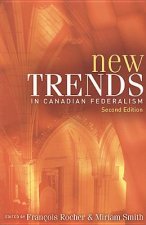
Delivery
Shopping guide





Doesn't suit? No problem! You can return within 30 days
 Gift voucher
any value
Gift voucher
any value
You won't go wrong with a gift voucher. The gift recipient can choose anything from our offer.
Microeconomics
 English
English
 395 b
395 b
30-day return policy
You might also be interested in


The most innovative feature of the book is its extensive coverage of recent research in behavioral and experimental economics. This research not only documents behavior inconsistent with some elements of traditional theory but also advances positive theories with superior predictive power. The research covered includes studies of loss aversion, reference-dependent preferences, the context and framing of choice, hyperbolic discounting and inconsistent intertemporal choice, predictable errors in updating probabilities, nonlinear weighting of probabilities, and prospect theory. The importance of this material was highlighted by the Swedish Academy of Sciences when it awarded the 2002 Prize in Economic Sciences to Daniel Kahneman (a psychologist who helped lay the foundations of behavioral economics) and Vernon Smith (an experimental economist). Although the topics are "advanced" in the sense that they are near the frontier of economic research and seldom-covered in textbooks, they are readily comprehended because they center on simple controlled experiments and relate to everyday concerns. Covering results from behavioral and experimental economics along with traditional microeconomic doctrine involves re-balancing three key components of economics: issues, theory, and data. Traditional introductions emphasize issues, sketch theory, and use data only to illustrate theory. More advanced texts traditionally focus on theory, relegating issues and data to asides. Any data in traditional texts are usually from observational (non-experimental) studies. The relationship between theory and observational data is likely to be ambiguous until probed by advanced econometric methods and may remain so even then. Recognizing that few students have the econometric skills needed for serious analysis of observational data, some authors focus their texts almost exclusively on theory and issues. Although widely used, such texts discomfort students and professors to whom data-free exposition smells of indoctrination. In comparison to traditional texts, this book places more emphasis on experimental data, both when they support received theory and when they reveal anomalies. Thus the book covers both feed-lot experiments that generate conventionally shaped isoquants and choice experiments that cast doubt on the predictive value of expected utility theory. The book presupposes nothing beyond high-school algebra and intellectual curiosity. It is intended for undergraduate classes and independent reading. Anyone writing for an audience that includes undergraduates must decide how to handle the growing gap between the rudimentary mathematical skills acquired in secondary schools, particularly in the United States, and the growing mathematical prerequisites for reading economists' professional journals. This gap must somehow be bridged if undergraduates are to be prepared for employment or graduate study in economics and related fields. To be fully prepared, students need not only classes in mathematics but also practice in formulating and solving quantitative economic problems. Too many texts either omit such problems or assume that students come fully equipped to handle them. In contrast, this text offers many opportunities to apply high-school algebra in an economic context and to develop basic skills in linear programming and risk modeling. Through footnotes and parenthetical remarks, it also encourages readers to make good use of any calculus they know. Exercises appear where appropriate in the text; solutions and supplemental problems are collected at the ends of chapters. When teaching from the book, I usually start each class by asking students if they had trouble solving any problems in the previous chapter and end class by helping students tackle the problems in the current chapter. By solving the problems students can make appreciable progress toward becoming competent economists.
About the book
 English
English
Categories




 How to shop
How to shop































